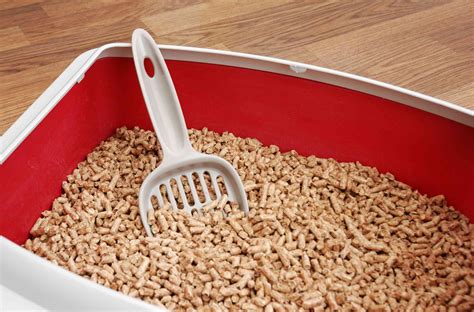Introduction
Cat litter is an essential part of cat ownership, but it can also pose a respiratory hazard to both cats and their human companions. Dust and other particles from cat litter can irritate the lungs and airways, leading to coughing, wheezing, and other respiratory problems.

Types of Cat Litter and Respiratory Issues
There are several different types of cat litter available, each with its own potential risks for respiratory issues.
Clay litter: Clay litter is the most common type of cat litter, and it is also the most likely to cause respiratory problems. The dust from clay litter can irritate the lungs and airways, leading to coughing, wheezing, and other respiratory problems.
Sand litter: Sand litter is another common type of cat litter, and it is generally less dusty than clay litter. However, sand litter can still contain particles that can irritate the lungs and airways.
Crystal litter: Crystal litter is made from silica gel, and it is very absorbent. However, crystal litter can also be very dusty, and the dust can irritate the lungs and airways.
Pine litter: Pine litter is made from pine shavings, and it is a natural and biodegradable option. However, pine litter can contain volatile organic compounds (VOCs), which can irritate the lungs and airways.
Respiratory Problems Caused by Cat Litter
Cat litter can cause a variety of respiratory problems, including:
Coughing: Coughing is a common symptom of respiratory irritation, and it can be caused by cat litter dust or other particles.
Wheezing: Wheezing is a high-pitched whistling sound that is caused by narrowed airways. Cat litter dust or other particles can cause wheezing.
Shortness of breath: Shortness of breath is a feeling of not being able to get enough air. Cat litter dust or other particles can cause shortness of breath.
Asthma: Asthma is a chronic respiratory condition that causes wheezing, coughing, and shortness of breath. Cat litter dust or other particles can trigger asthma attacks.
Risk Factors for Respiratory Issues from Cat Litter
There are several factors that can increase the risk of respiratory problems from cat litter, including:
Allergies: People who are allergic to cats are more likely to develop respiratory problems from cat litter.
Asthma: People with asthma are more likely to develop respiratory problems from cat litter.
Chronic respiratory conditions: People with chronic respiratory conditions, such as chronic bronchitis or emphysema, are more likely to develop respiratory problems from cat litter.
Smoking: Smoking can damage the lungs and airways, making them more susceptible to irritation from cat litter dust.
How to Reduce the Risk of Respiratory Problems from Cat Litter
There are several things you can do to reduce the risk of respiratory problems from cat litter, including:
Choose a low-dust cat litter: There are several low-dust cat litters available, which can help to reduce the risk of respiratory problems.
Use a litter box with a lid: A litter box with a lid can help to trap dust and other particles, preventing them from getting into the air.
Change the litter frequently: Changing the litter frequently will help to remove dust and other particles that can irritate the lungs and airways.
Vacuum the area around the litter box frequently: Vacuuming the area around the litter box will help to remove dust and other particles that can be tracked around the house.
Keep your cat out of the room where the litter box is located: If you are allergic to cats or have asthma, it is best to keep your cat out of the room where the litter box is located.
Conclusion
Cat litter is an essential part of cat ownership, but it can also pose a respiratory hazard to both cats and their human companions. By choosing a low-dust cat litter, using a litter box with a lid, changing the litter frequently, vacuuming the area around the litter box frequently, and keeping your cat out of the room where the litter box is located, you can help to reduce the risk of respiratory problems from cat litter.
FAQs
Q: What is the best cat litter for people with respiratory problems?
A: There are several low-dust cat litters available, which can help to reduce the risk of respiratory problems. Some popular low-dust cat litters include:
- Arm & Hammer Clump & Seal Platinum Care
- Ever Clean Extra Strength Clumping Clay Litter
- Scoop Away Complete Mess Control Clumping Clay Cat Litter
Q: How often should I change my cat’s litter?
A: You should change your cat’s litter frequently, at least once a day. However, if you have multiple cats, you may need to change the litter more often.
Q: How can I tell if my cat has respiratory problems?
A: There are several signs that your cat may have respiratory problems, including:
- Coughing
- Wheezing
- Shortness of breath
- Difficulty breathing
- Lethargy
- Loss of appetite
If you notice any of these signs in your cat, it is important to take them to the vet.
Q: What are the risks of respiratory problems from cat litter?
A: Respiratory problems from cat litter can range from mild to severe. In severe cases, respiratory problems from cat litter can lead to:
- Pneumonia
- Bronchitis
- Emphysema
- Lung cancer





















